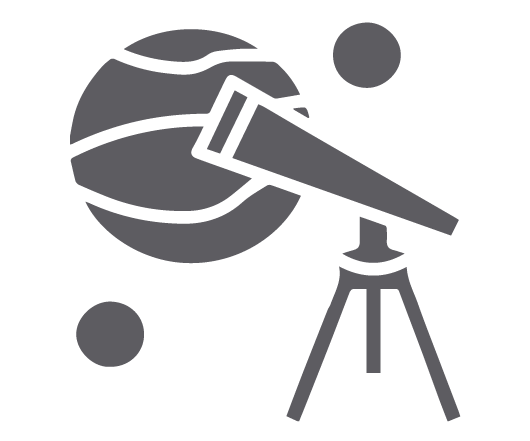Astronomy Homework Question and Answers – Second Part
#4. Briefly describe the astronomical uses of each of the following: Stonehenge, The Templo Mayor, The Sun Dagger, The Mayan observatory at Chichen Itza, lines in the Nazca Desert, Pawnee Lodges, the Big Horn Medicine Wheel.
Stonehenge can show exactly when the summer solstice is, by looking for the sun directly over a specific stone, called the Heel stone. The Templo Mayor is also used to mark the seasons, by watching the sun rise through two temles on the equinoxes. The Sun Dagger is a carved spiral onto which the sun forms a dagger of light only once a year- on noon of the summer solstice. The Mayan Observatory had windows strategically placed specifically for osbservations of Venus. The lines in the NAzca desert may look like well traveled walkways, but some of them are alighned in directions where the Sun or other bright stars are at certain times of the year. The Pawnee lodges had strategically placed holes for observing the passage of certain constellations. The 28 “Spokes” of the Big Horn Medicine Wheel probably relate to the month of the Native Americans, for they had months of 28 days, because they did not count the New Moon.
#9. Who was Ptolemy? Briefly describe how the Ptolemaic model of the universe explains apparent retrograde motion while preserving the ideas of an earth-centered universe.
Ptolemy was an ancient Greek astronomer (c. A.D 100-170) who came up with a model of the universe with the earth at the center. His flawed nation of an Earth centered-Universe with regards to Planetary motion was surprisingly accurate. His explained the apparent retrograde motion of the planets by suggesting that the planets moved in smaller circles while they were traveling along their orbits.
#14. Describe how Galileo helped spur acceptance of Kepler’s Sun-centered model of the Solar System
There were three basic objections that most people had to the Sun centered universe. 1. The Earth could not be moving because objects would be left behind while the earth moved. 2. The idea of non-circular orbits contradicted the idea that the heavens must be perfect and unchanging. 3. Stellar parallax ought to be detectable if the Earth Orbits the Sun. Galileo was able to answer all three objections. First, he demonstrated that a moving object remains in motion unless a force acts to stop it (i.e, why people remain standing in an airplane while it is flying.) Galileo showed that the heavens could change after he built a telescope in 1609, and noticed imperfections in the Sun, moon, and Earth. He assumed that the stars were actually far more distant then anyone had thought, therefore not allowing astronomers like Tycho Brahe to observe stellar parallax. He never actually proved it, he just had very strong evidence in its favor. But the true death of an Earth Centered system came when Galileo discorved that there were four moons orbiting Jupiter, not the Earth, and that Venus goes through phases like the moon, and therefore orbited the Sun.
Problems
#2. The Date of Christmas (December 25th) is set each year according to a lunar calendar.
False- The Date is set each year according to the Tropical calendar, having the same number of days in a year, 365, and 12 months. The Lunar calendar has 12 months, but with only 29 or 30 days for each month, and a year of about 354-355 days. Muslims still follow the Lunar calendar, but not Christians.
#5. In Science, saying something is a theory means that it is really just a guess.
False- A theory is a hypothesis that has passed a broad range of tests and is generally assumed to be true. A hypothesis is an educated guess.
